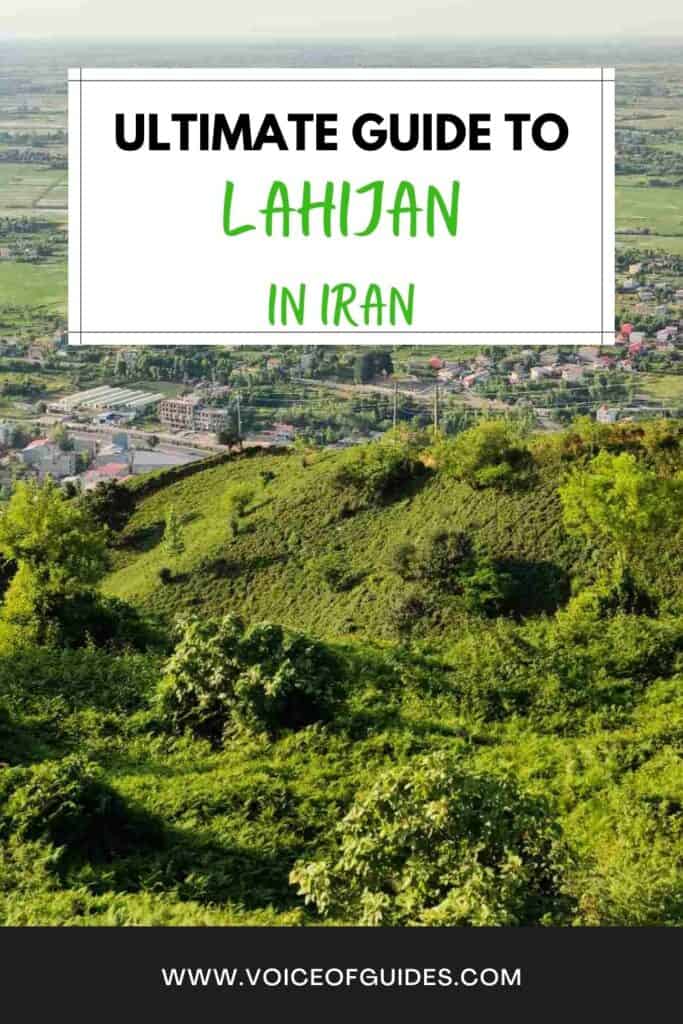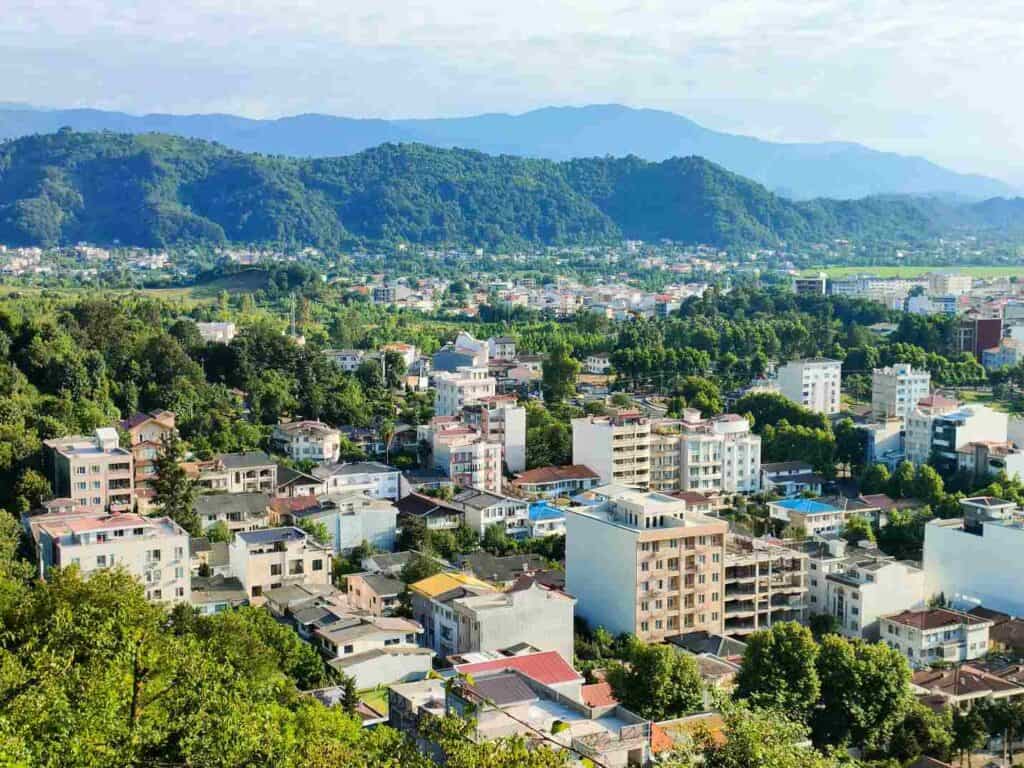This article may contain affiliate / compensated links. For full information, please see our disclaimer here.
Lahijan is one of the most beautiful places in Iran and a must-see once you travel around the northern part of the country. It does not have famous monuments, but the surrounding rice fields, tea plantations, and wetlands make it a unique place in Iran for nature-lovers. Lahijan is a proof that Iran has all kinds of landscapes. Since this is a less-traveled part of Iran, I made this travel guide based on my experiences as a solo female traveler in northern Iran, from Zanjan to Mashhad.
- What is the best time to go to Lahijan?
- How to go to Lahijan from Rasht?
- How to go from Lahijan to Ramsar?
- What should you know about Lahijan?
- How to visit the tea plantations of Lahijan?
- Other things to do in Lahijan
- What to taste in Lahijan?
- Where to sleep in Lahijan?
- Other articles about Iran
- More articles about the Middle East
- How to plan your trip to Iran
What is the best time to go to Lahijan?
The best time to go there is from late spring till early autumn (May- September). The rest of Iran is often unbearable hot during the summer months, making northern Iran an ideal destination. However, the humidity is relatively high around the Caspian Sea. During winter, the temperature drops, and there is often snowfall in this part of Iran.
In May, the hills surrounding Tabriz and Urmia (Orumiyeh) turn green, dotted with flowers, and the colors give an extra charm to the landscape.
If you mainly come to northern Iran for birdwatching, the migratory period during mid-autumn and mid-winter is the best time to go to Lahijan.
The best 2 weeks itinerary in north Iran
Check out the best books about Iran
How to go to Lahijan from Rasht?
Rasht is the closest big city in northern Iran. Taxis depart from the main square in front of the Shahrdari Square Complex to Lahijan. In the morning you can easily get a shared taxi, however, in the afternoon you may need a private taxi.
A private taxi costs 900 000 Rials (~3$) and takes 1 hour.
How to go from Lahijan to Ramsar?
A private taxi costs 2 150 000 Rial from Lahijan to Ramsar.
What should you know about Lahijan?
Lahijan is a city of tea plantations, and it is interesting to know its story. Haj Muhammad Mirza Kashef al-Saltaneh planted the first tea bushes on the hillsides near his house, which now serves as the Tea Museum. He imported the tea first from India, which has an interesting story. He was the first mayor of Tehran and served as the Iranian ambassador to India during British rule. In India, tea production was a highly lucrative business, for which the British kept the procedure secret. But he was eager to learn more about that and decided to work on the tea plantation as a French worker, and secretly took some samples of Indian tea to Iran.
How to plan your trip to Iran
Book your flight to Iran: I always use Google Flights, Skyscanner or Wayaway to find the cheapest flight tickets worldwide. To get an extra 10% for your Wayaway Membership Plus program use my discount code VOG
Important: Booking.com and other common platforms do not work due to international restrictions in Iran. The only exemption is Skyscanner, where you can book both your international flight and accommodation in Iran!
Book your accommodation in Iran: Hostelworld.com offers a limited number of hostels. All other services are only available through local travel agencies, like 1st Quest.
Get your visa to Iran: 1st Quest or Tap Persia local companies can easily arrange your insurance for Iran
Book domestic flights, hotels, transfers, bus and train tickets, and local tours, all in one place via 1st Quest travel agency.
Another good thing is that by using my discount code, you get an extra 5% off your bookings: VOG%1stQ
Virtual Private Network (VPN): Use VPNExpress, the fastest and best Virtual Private Network to get access to blocked sites in Iran and to prevent hackers from stealing your private information.
Insurance to Iran: 1st Quest or Tap Persia local companies can arrange for you visa to Iran
Book local guides and local tours: Pirsik is specialized in offering tour guides and local tours in less touristic countries, including Iran.
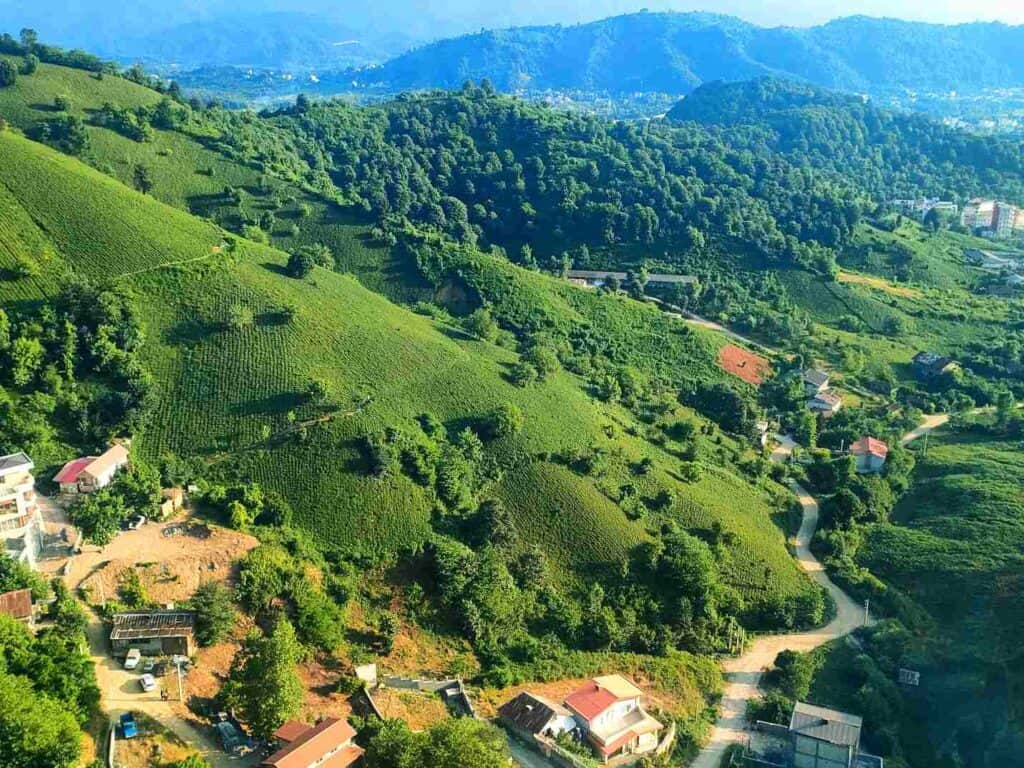
Here the tea can grow under perfect conditions with high humidity at a higher elevation enclosed by the Alborz Mountain ranges. Later it spread across other parts of the province and to Mazandaran as well, but Gilan province is still the primary tea center of Iran that produces 90% of all the tea in Iran. Tea arrived in Iran only in the 17th century and overcame the popularity of coffee. Since China, another major tea producer is close to Iran, the transport of tea became much easier than that of coffee. Thus, tea quickly became more popular than coffee in Iran.
Today there are over 100 tea factories in Iran, and most tea fields cover the hillsides.
Drinking tea is part of Iranian culture. However, local farmers face immense competition, making it hard for them to survive. Much of the former fields have already been replaced by real estate investments.
How to visit the tea plantations of Lahijan?
The best way to discover the tea plantations is to take a cable car. You do not need to drive far to reach the plantations. You can walk up (15 minutes) from the tea museum or take a taxi to the top of Satan Hill (Sheytan Kuh). From here, the cable car takes you to another hill with an amazing view of the tea plantations, rice fields, the city of Lahijan, and the Caspian Sea. A walking trail leads to the cable car’s destination if you want to climb. However, I think it is better to enjoy this cable car and descend on foot to Lahijan lake.
Cost of cable car: 900 000 Rial for foreigners, 10-12 minutes
When you get off the cable car on the other side, you find some restaurants, stalls selling ice cream, and pavilions to smoke nargileh with entertainment for children. When you go straight from the cable car station, you reach the tea plantation, where you can walk inside and take unique photos standing between the bushes.
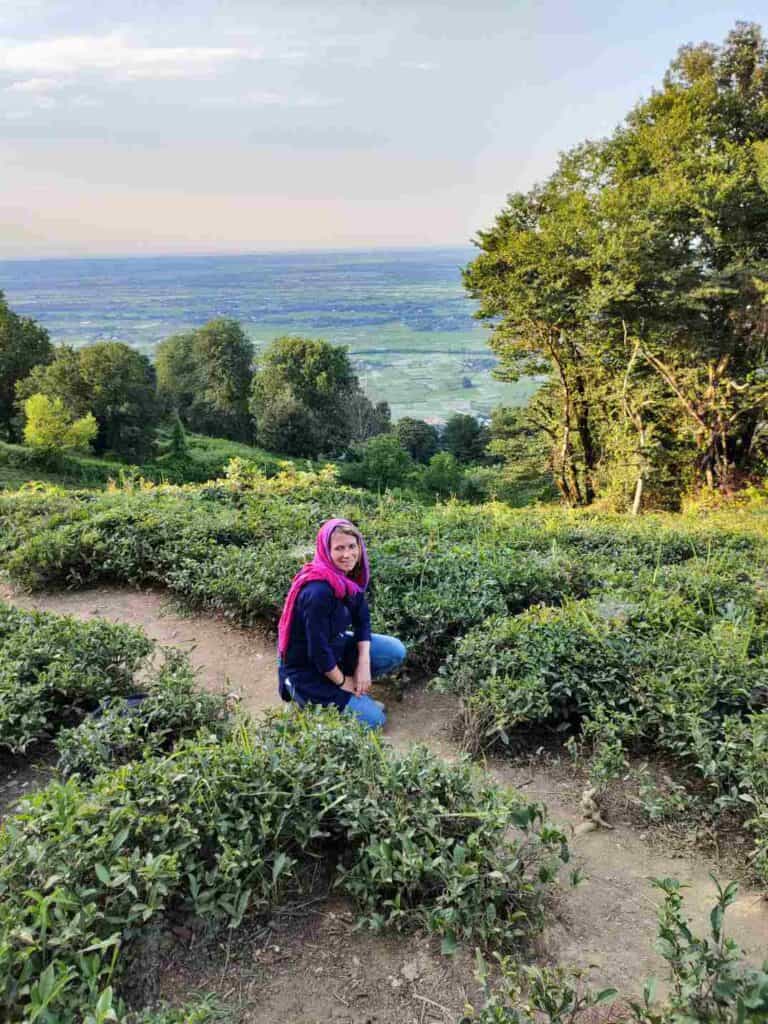
Other things to do in Lahijan
National Tea Museum
The tea museum is a two-storey building near the Sheytan Kuh telling the story of Muhammad Mirza Kashif al-Saltanah, who introduced tea to Iran. Visitors get an idea about the tea cultivation process, tools and precious tea sets are also on display.
Entrance fee: 500 000 Rials for foreigners.
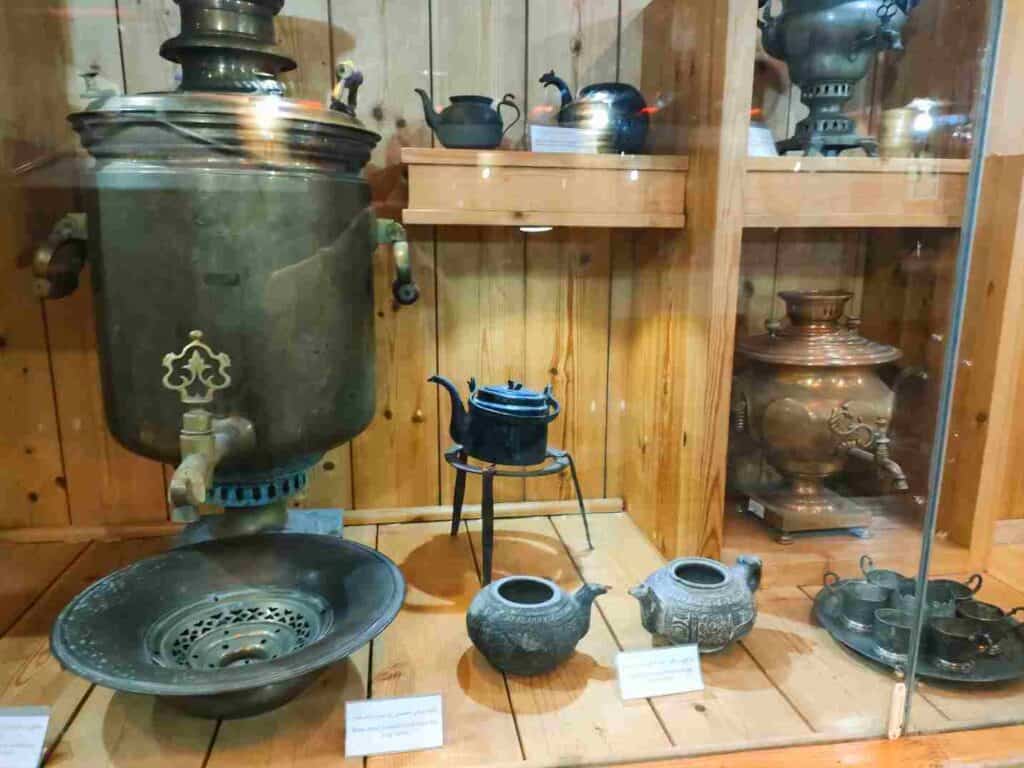
Sheytan Kuh waterfall
Afterward, return with the cable car and take the walking trail toward the Sheytan Kuh artificial Waterfall.
Lahijan Lake (Lahijan Pool)
Next to the Sheytan Kuh waterfall, you get to the bank of the Lahijan lake that you already saw from the top of the mountain. It is one of the most attractive parts of the city. Shah Abbas Safavid ruler had a palace constructed for himself on the island in the middle of the lake for his visits to Lahijan. However, there is nothing left from his residence. Instead, the green area is popular for locals to stroll around and watch the bird life. The 2-km-long walking trail takes you around the lake.
Around the lake are several cafes and restaurants; this is the center of nightlife in Lahijan and a great place to interact with local people.
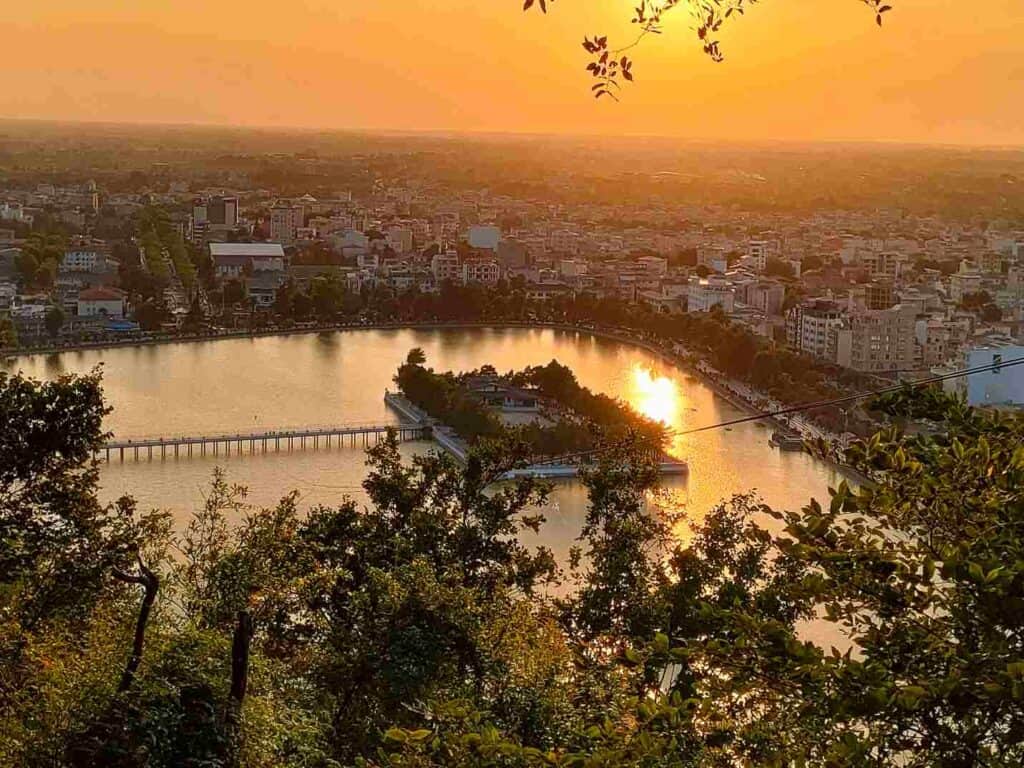
Lahijan Sustan Wetland
Another nature attraction in the city of Lahijan (only a 10 minutes’ drive from the National tea museum) is the Sustan Wetland area.
Sheikh Zahed Gilani shrine
This shrine of a famous spiritual person from the 13th century is still a popular pilgrimage site. His lectures and principles greatly impacted the Ilkhanid rules, the descendants of Genghis Khan.
Sheikh Safi-ad-din, who became a leader of an Islamic Sufi order and whose tomb is the landmark of Ardabil was his most famous disciple. Two hundred years after the death of Sheikh Zahed Gilani, the Safavid dynasty ascended the throne and established their empire with the first ruler, Shah Ismail I.
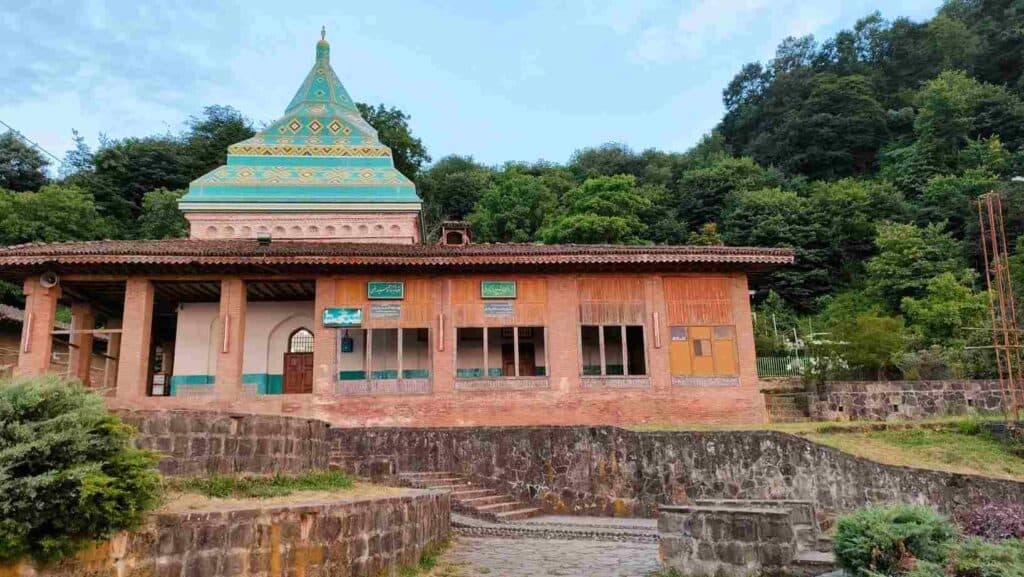
How to go there?
The shrine is not within walking distance from the city center, but you can easily find a taxi around Lahijan lake or call one through the Snapp application.
Lahijan as a birdwatching destination
The two central places for birdwatching around Lahijan are the Amir Kelayeh International Wetland and Bojagh National Park.
Amir Kelayeh wetland: It takes a 50-minutes’ drive to reach the area only 1 km from the shore of the Caspian Sea. It attracts several migratory birds, including flamingo, pelican, Eurasian teal, coot, and white-tailed eagle. The wetland is also abundant in different fish species, like zander, wels catfish, pike, carp and tench. In the freshwater lagoon, you can also find sea pistachio and white water lily.
Bojagh National Park: it takes around an hour to get to the national park that is also located along the Caspian Sea at a river delta. It is an important wetland for more than 230 bird species of migratory birds in northern Iran, covering over 3000 hectares. The Kiashahr Bridge crossing lagoon is a famous site of the protected area. Visitors can take about in the lagoon to observe the birds, such as greylag goose, red-breasted goose, flamingo, pelican, black-winged Stilt, cormorant, heron, ibis, mallard, Eurasian teal, gadwall, spoonbill, ruddy shelduck.
What to taste in Lahijan?
Lahijan has a famous cookie, called Koloocheh, that is sold with different fillings: walnut, coconut or cacao.
Where to sleep in Lahijan?
Fajr Hotel (2 star)
Lahijan resppina Hotel (5 star)
Lahijan ITTIC Inn Hotel (4 star)
Lahijan, the tea capital of Iran, is a place you must include when traveling in northern Iran, even if it is not a city that keeps you busy for days. I was amazed by the view of the tea plantations covering the hillsides with rice fields and the Caspian Sea in the background. Hopefully, this travel guide will help you plan your visit to Lahijan, a gem of Gilan.
Other articles about Iran
What you can and cannot do in Iran
45 essential tips before traveling to Iran
How to dress up when traveling to Iran
The best books to read about Iran
The best 2-week itinerary in Iran (the classical route)
The best 2-week north Iran itinerary
All you need to know about the Iranian currency
The best places to visit in Tehran (museums, palaces, religious sites)
The best things to do in Tehran
Travel guide to Tabriz, North Iran
Travel guide to Mashhad, the holy city of Iran
Best things to do in Ramsar at the Caspian Sea
What to do in South Khorasan province?
How to visit Garmeh village, Varzaneh desert and Na’in
More articles about the Middle East
